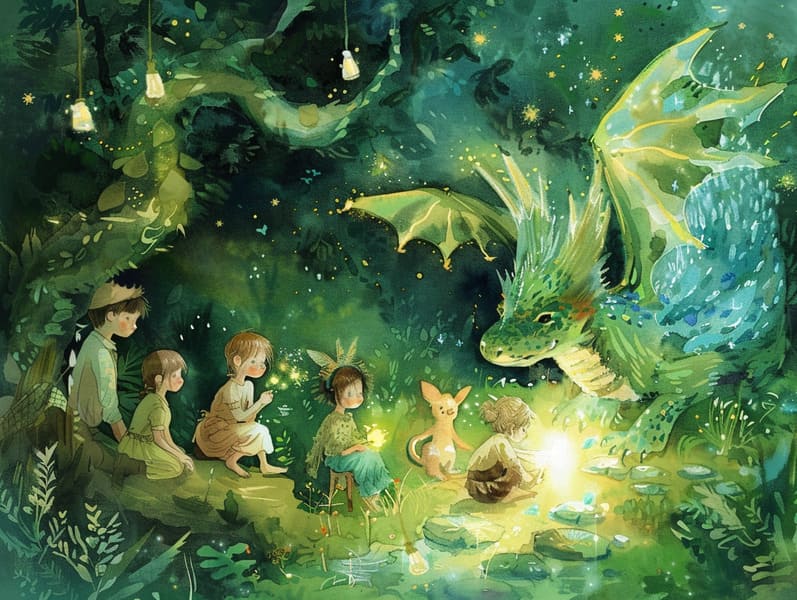
Historical fairy tales have historical significance. These stories have been passed down from one generation to the next far before they were ever transcribed. They originated from a variety of backgrounds, including European traditions. They were initially narrated among adults, often carrying themes and messages aligned with the societal norms and beliefs of the time.
The Grimm brothers, the two Grimm brothers, were among the first to compile and publish many of these beloved fairy tales. Their anthology, "Grimm's Children's Stories," included tales like "The Story of Cinderella," "The Bread Crumb Trail," and "Snow-White and Rose-Red," which have since become pillars in the world of famous fairy tales. Similarly, the Danish author's fantastical narratives, such as "The Story of the Little Mermaid," and "The Ugly Duckling," have enchanted hearts worldwide, ensuring their place in the pantheon of beloved fairy tales.
Though they are old, these tales remain as important as ever, especially as bedtime stories for kids. These delightful tales are now available in many formats, including richly illustrated books, whimsical animations, and internet fairy tales.
Their enduring popularity can be connected to several magical reasons:
Ethical Lessons: Classic fairy tales often convey important moral lessons. Narratives like "The Wolf and the Liar" teach the value of being truthful, while "The Tale of the Tortoise and the Hare" point out the benefits of tenacity and modesty. These narratives offer kids clear distinctions between truth and falsehood, forming their moral compass in a kind yet impactful way.
Warmth and Understanding: Fairy tales frequently portray figures facing challenges and problems, encouraging young listeners to understand with their struggles and celebrate their triumphs. For instance, "The Story of Beauty and the Beast" highlights the merit of looking past the exterior to know the true character of a character, developing empathy and knowledge.
Cultural Perception: Many old fairy tales are rooted in the cultural contexts from which they emerged. Exploring these tales can provide intriguing perspectives into different social structures, enhancing a sense of world appreciation and awareness.
Imagination and Innovation: The fanciful elements in old fairy tales—mythical creatures—awaken children’s innovative ideas. These fairy tales move readers to mythical realms, firing up creative thinking and a sense of wonder that stays a lifetime.
Ancient fairy tales check here are not only enchanting but also enlightening. They provide alluring tools in advancing various mind and heart abilities in children. When timeless fairy tales are spoken, they cultivate verbal skills by introducing new language items and sophisticated sentence structures. This practice also improves listening skills and concentration, as little ones remain attentive, ready to see what happens next.
Furthermore, contemplating the themes and characters of timeless fairy tales can foster analytical skills and evaluative skills. Young readers are guided to identify patterns, foresee events, and know cause and effect. These talks also help little ones convey their thoughts and feelings, boosting their emotional intelligence.
In today’s electronic age, the proliferation of online storybooks has made these fairy tales more available than ever. Digital sites and programs offer ample collections of popular fairy tales that can be perused or heard anytime, anywhere. Fairy tales read out loud are particularly widespread, making available an enjoyable way for the young to savor these alluring stories. Narrated books and read-out-loud videos transport characters and settings to life, often supplemented by spellbinding sound effects and tunes that heighten the storytelling journey.
The timeless charm of timeless fairy tales lies in their ability to change to present days while preserving their central messages. Contemporary modernizations of these narratives often bring in more different figures and modern settings, making them pertinent to today’s audience. However, the essential messages of valour, charity, and rightness remain unchanged, continuing to resonate with young readers of all ages.
Traditional fairy tales also offer a sense of assurance and knownness. They grant access to a coherent narrative with a clear beginning, middle, and end, often finishing with the termination of conflicts and the triumph of truth over falsehood. This assuredness can be soothing for young readers, affording a sense of stability in an always shifting world.
Timeless fairy tales continue to allure and educate new generations, maintaining their allure and pertinence in modern society. As kids' bedtime tales, they put forth a perfect blend of charm and understanding, enhancing moral values, empathy, and creativity. The availability of digital storybooks and the popularity of fairy tales recited promise that these ancient stories remain accessible to new generations.
By keeping and sharing these stories, we continue to cherish the rich tapestry of fantasy and cultural heritage. Whether you are discovering a vibrantly illustrated book, viewing a web-based library, or hearing an narrated book, the wonder of famous fairy tales is always within reach. These stories show us of the timeless ability of stories and its ability to join us across generations and cultures.
Be it you are browsing a gorgeously illustrated book, enjoying a cyber library, or playing an narrated book, the attraction of ancient fairy tales is always within reach.
These tales teach us of the invariable nature of fairy tales and its ability to connect us across generations and cultures, making a tie that enchants and educates alike.